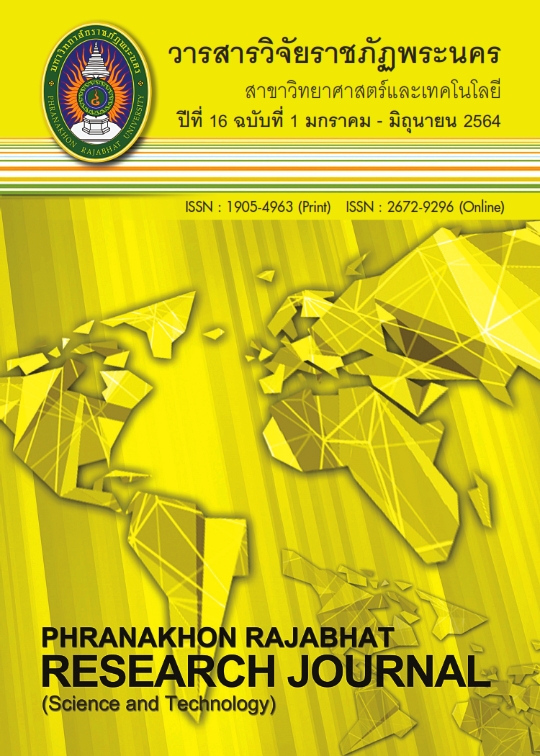INVESTIGATION OF INTERNATIONAL CATALOGUES IN THE MAINLAN SOUTHEAST ASIA
Keywords:
earthquake catalogue, frequency-magnitude distribution, Southeast AsiaAbstract
The research aimed to study the quality of earthquake catalogue of the National Earthquake
Information Center (NEIC) and the International Seismological Center (ISC), with respect to the seismicity patterns of the mainland Southeast Asia. The readymade relationships between the different magnitude scales were derived to allow their convenient interconversion. Earthquake declustering was performed in order to screen the main shocks from the foreshocks and aftershocks. The NEIC’s network has gone through periods of station expansion, change in theseismic measurement system but the only major periods of rate changes were found. The ISC catalogue has gone through periods of change in seismic measurement system but the only major periods of rate changes were found. Therefore, the NEIC’s catalogue and the ISC’s catalogue ware sufficient for hazardous earthquake investigations. The results of the NEIC’s catalogue were sufficient for hazardous earthquake investigations that were recorded during 2014.0185-2017.6086 for Mw > 4.5. The FMD investigation using EMR revealed Mc of 4.5, 4.6, 4.8 and 4.5 for the 4 bulk data set. And the results of the ISC catalogue were sufficient for hazardous earthquake investigations that were recorded during 1995.2115 –2014.4836 for mb > 4.0. The FMD investigation using EMR revealed Mc of 4.1, 4.0 and 4.4 for the 3 bulk data set.
References
Chouliaras, G. (2009). “Seismicity anomalies prior to the 8 June 2008”, Mw=6.4earthquake in Western
Greece, Nat. Hazards Earth Syst. Sci, 9, 327–335.
Chouliaras, G. (2009). “Seismicity anomalies prior to the 13 December 2008, Ms=5.7 earthquake in Central Greece”. Nat. Hazards Earth Syst. Sci, 9, 501–506.
Felzer, K. R., Abercrombie, R. E. & Ekstrom, G. (2004). “A common origin for aftershocks, foreshocks, and multiplets”. Bull. Seism. Soc. Am, 94(1), 88–98.
Gutenberg, B. & Richter, C. F. (1944). “Frequency of earthquakes in California”. Bull. Seismol. Soc. Am, 34, 185-188.
Gardner, J. K. & Knopoff, L. (1974). “Is the sequence of earthquakes in Southern California, with aftershocks removed, Poissonian?”. Bull. Seismol. Soc. Am, 64(1), 363–367.
Gupta, I. D. (2002). “The state of the art in seismic hazard analysis”. ISET J. Earthquake Technol, 39(428), 311–346.
Habermann, R. E. (1983). “Teleseismic detection in the Aleutian Island Arc”. J. Geophys. Res, 88,
–5064.
Habermann, R. E. (1987). “Man-made changes of seismicity rates,Bull”. Seismol. Soc, Am, 77,141-159.
Hanks, T. C. & Kanamori, H. (1979). “A moment-magnitude scale”. J. Geophys. Res, 84, 2348–2350.
Ishimoto, M. & Iida, K. (1939). “Observations sur les seismes enregistres par le microsismographe
construit dernierement,” Bull. Earthq. Res. Inst. Univ. Tokyo, 17, 443-478 (in Japanese with French abstract).
Kramer, S. L. (1996). Geotechnical Earthquake Engineering (Prentice Hall, Inc., Upper Saddle River,
New Jersey).
Nuannin, P., Kulh´anek, O., & Persson, L. (2005). “Spatial and temporal b-value anomalies preceding the devastating off coast of NW Sumatra earthquake of December 26, 2004”. Geophys. Res. Lett. 32, L11307.
Nutalaya, P. Sodsri, S. & Arnold, E. P. (1985). Series on Seismology-Volume II Thailand. In Arnold, E. P (Ed.), Southeast Asia Association of Seismology and Earthquake Engineering.
Packham, G.H. (1993). Plate tectonics and the development of sedimentary basins of the dextral
regime in western Southeast Asia. Journal of Southeast Asian Earth Sciences, v.8, nos, 1-4, 497-451.
Pailoplee, S. (2014). Earthquake Catalogue of the Thailand Meteorological Department A Commentary, Journal of Earthquake and Tsunami., 08 (5),.
Peltzer, G. & Tapponnier, P. (1988). Formation and evolution of strike-slip faults, rifts, and basins
during India-Asia collision: an experimental approach Journal of Geophysical Research, 93(1988), 85-117
Polachan, S. (1991). Development of Cenozoic basins in Thailand, Mar Pet Geol, 8, 84-97.
TMD, (2014). Seismic Monitoring System. Seismological Bureau, Thai Meteorological Department. Retrieved from http://www.earthquake.tmd.go.th/insid info.html?earthquake=2085 [May 5, 2014.]
Utsu, T. (1965). A method for determining the value of b in the formula log (N) = a-bM showing the
magnitude-frequency relation for earthquakes, Geophys. Bull. Hokkaido Univ, 13, 99-103.
(in Japanese with English abstract).
Wiemer, S. (2001). “A software package to analyze seismicity: ZMAP”. Seismol. Res, 72, 373–382.
Wiemer, S. & Wyss, M. (2000). “Minimum magnitude of complete reporting in Earthquake catalogs:
Examples from Alaska, the Western United States, and Japan”. Bull. Seism. Soc. Am, 90, 859-869.
Woessner, J. & Wiemer, S. (2005). “Assessing the quality of earthquake catalogues: Estimating the
magnitude of completeness and its uncertainty”. Bull. Seismol. Soc. Am, 95(2), 684–698.
Wyss, M. (1991) “Reporting history of the Central Aleutians seismograph network and the quiescence
preceding the 1986 Andreanof Island earthquake” Bull. Seismol. Soc.Am, 81, 1231–1254.
Zuniga, F. R. & Wiemer, S. (1999). “Seismicity patterns: Are they always related to natural causes?”,
, 713-726.
Downloads
Published
Issue
Section
License
โปรดกรอกเอกสารและลงนาม "หนังสือรับรองให้ตีพิมพ์บทความในวารสารวิจัยมหาวิทยาลัยราชภัฏพระนคร สาขาวิทยาศาสตร์และเทคโนโลยี" ก่อนการตีพิมพ์




